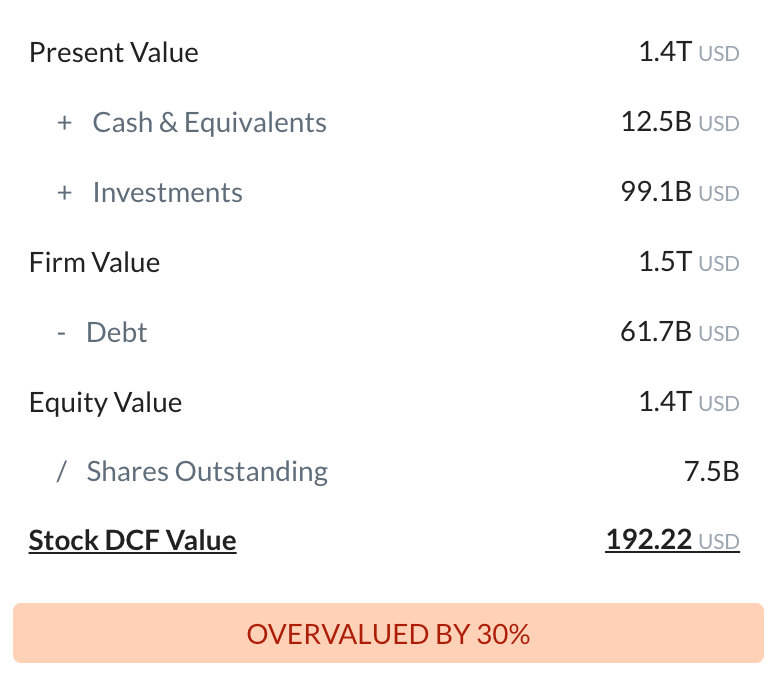
United Airlines Holdings Inc
NASDAQ:UAL

Intrinsic Value
The intrinsic value of one
 UAL
stock under the Base Case scenario is
194.1
USD.
Compared to the current market price of 65.14 USD,
United Airlines Holdings Inc
is
Undervalued by 66%.
UAL
stock under the Base Case scenario is
194.1
USD.
Compared to the current market price of 65.14 USD,
United Airlines Holdings Inc
is
Undervalued by 66%.
The Intrinsic Value is calculated as the average of DCF and Relative values:

Valuation History
United Airlines Holdings Inc

Fundamental Analysis

United’s heavy reliance on business and premium international travel leaves it vulnerable if corporate travel budgets fail to fully recover from pandemic-era shifts in remote work, potentially limiting revenue growth.
United’s robust hub-and-spoke network, particularly in Chicago, Denver, Houston, and Newark, positions the airline to capture a high volume of profitable long-haul and connecting traffic, supporting stable revenue streams.

Revenue & Expenses Breakdown
United Airlines Holdings Inc

Balance Sheet Decomposition
United Airlines Holdings Inc

| Current Assets | 20.1B |
| Cash & Short-Term Investments | 15.3B |
| Receivables | 2.3B |
| Other Current Assets | 2.5B |
| Non-Current Assets | 56B |
| Long-Term Investments | 1.2B |
| PP&E | 47.5B |
| Intangibles | 7.2B |
| Other Non-Current Assets | -1m |
Free Cash Flow Analysis
United Airlines Holdings Inc

| USD | |
| Free Cash Flow | USD |
Earnings Waterfall
United Airlines Holdings Inc

|
Revenue
|
57.7B
USD
|
|
Cost of Revenue
|
-20.8B
USD
|
|
Gross Profit
|
36.9B
USD
|
|
Operating Expenses
|
-31.3B
USD
|
|
Operating Income
|
5.6B
USD
|
|
Other Expenses
|
-1.9B
USD
|
|
Net Income
|
3.7B
USD
|
UAL Profitability Score
Profitability Due Diligence

United Airlines Holdings Inc's profitability score is 60/100. The higher the profitability score, the more profitable the company is.

Score
United Airlines Holdings Inc's profitability score is 60/100. The higher the profitability score, the more profitable the company is.
UAL Solvency Score
Solvency Due Diligence

United Airlines Holdings Inc's solvency score is 41/100. The higher the solvency score, the more solvent the company is.

Score
United Airlines Holdings Inc's solvency score is 41/100. The higher the solvency score, the more solvent the company is.
Wall St
Price Targets
UAL Price Targets Summary
United Airlines Holdings Inc

According to Wall Street analysts, the average 1-year price target for
 UAL
is 129.88 USD
with a low forecast of 105.04 USD and a high forecast of 161.7 USD.
UAL
is 129.88 USD
with a low forecast of 105.04 USD and a high forecast of 161.7 USD.
Dividends
Current shareholder yield for  UAL is
.
UAL is
.
Shareholder yield represents the total return a company provides to its shareholders, calculated as the sum of dividend yield, buyback yield, and debt paydown yield. What is shareholder yield?
The intrinsic value of one
 UAL
stock under the Base Case scenario is
194.1
USD.
UAL
stock under the Base Case scenario is
194.1
USD.
Compared to the current market price of 65.14 USD,
 United Airlines Holdings Inc
is
Undervalued by 66%.
United Airlines Holdings Inc
is
Undervalued by 66%.
























































 You don't have any saved screeners yet
You don't have any saved screeners yet